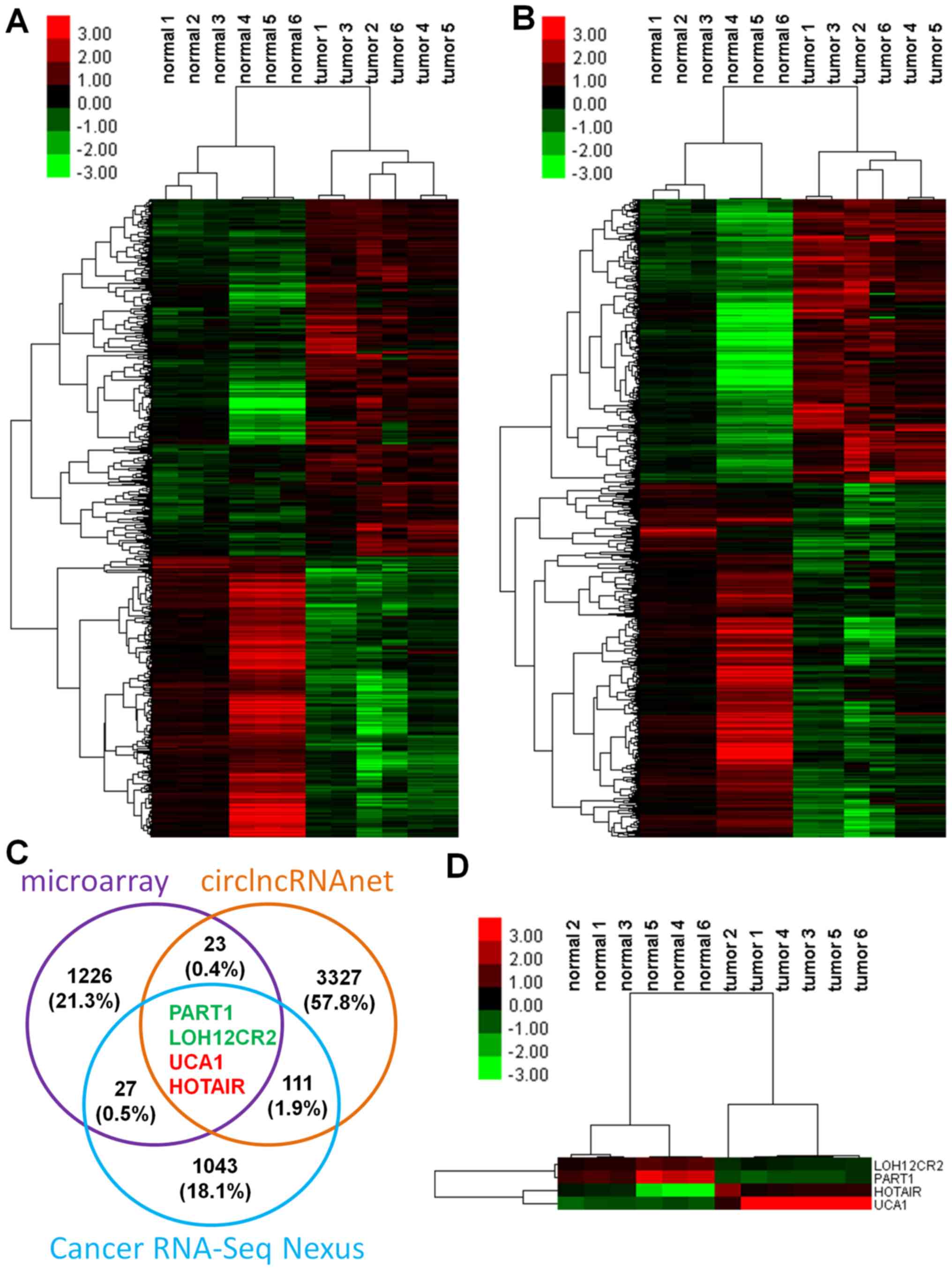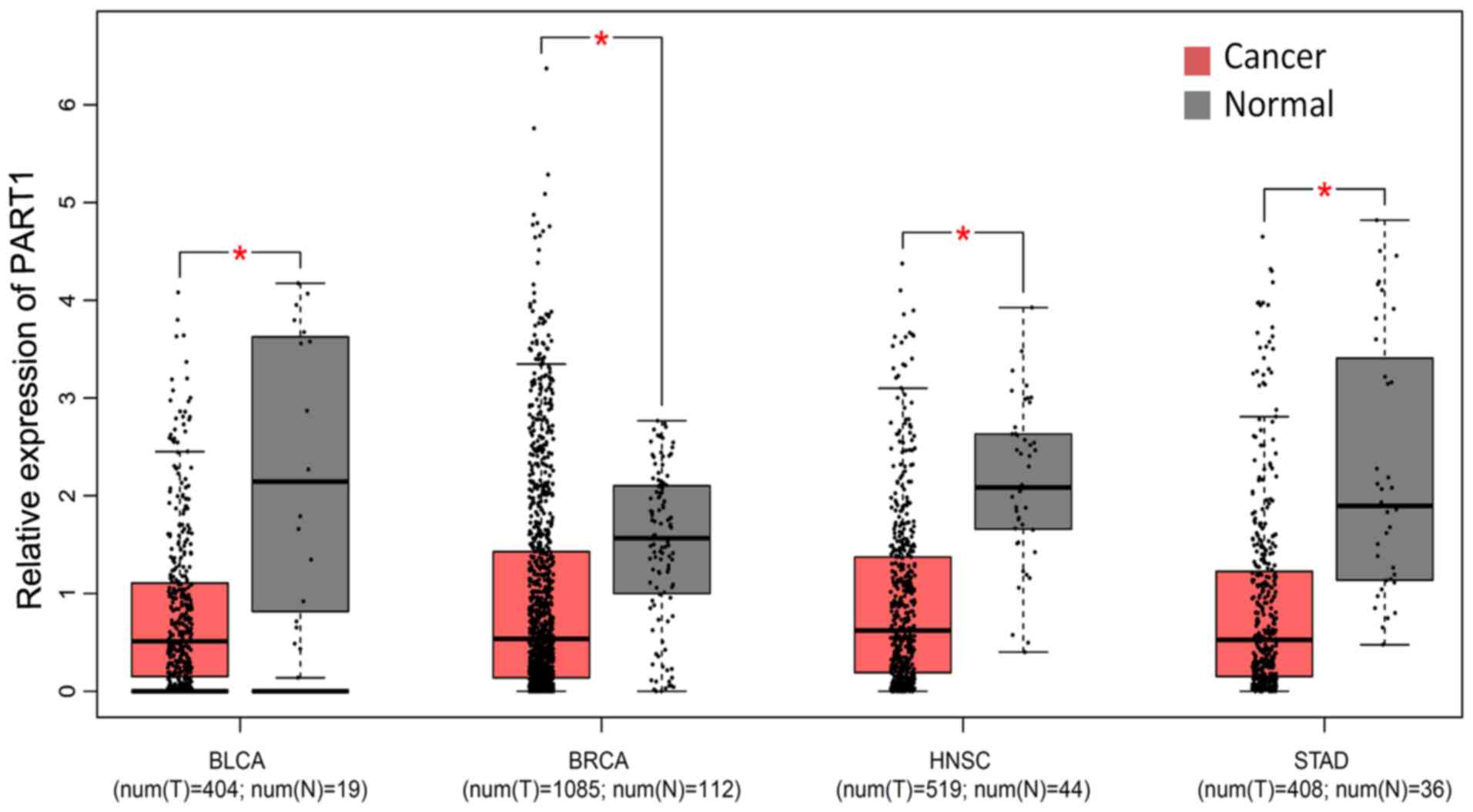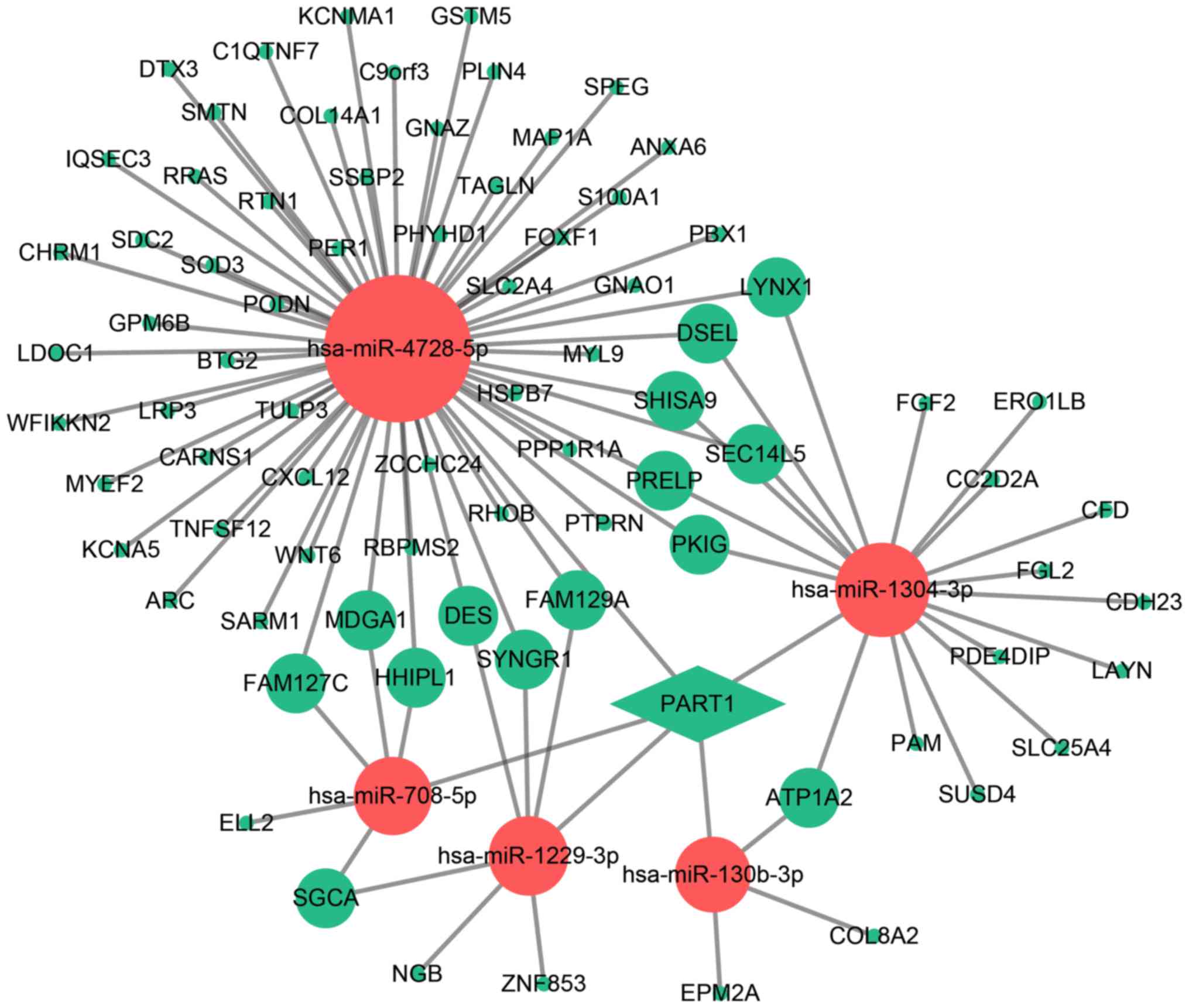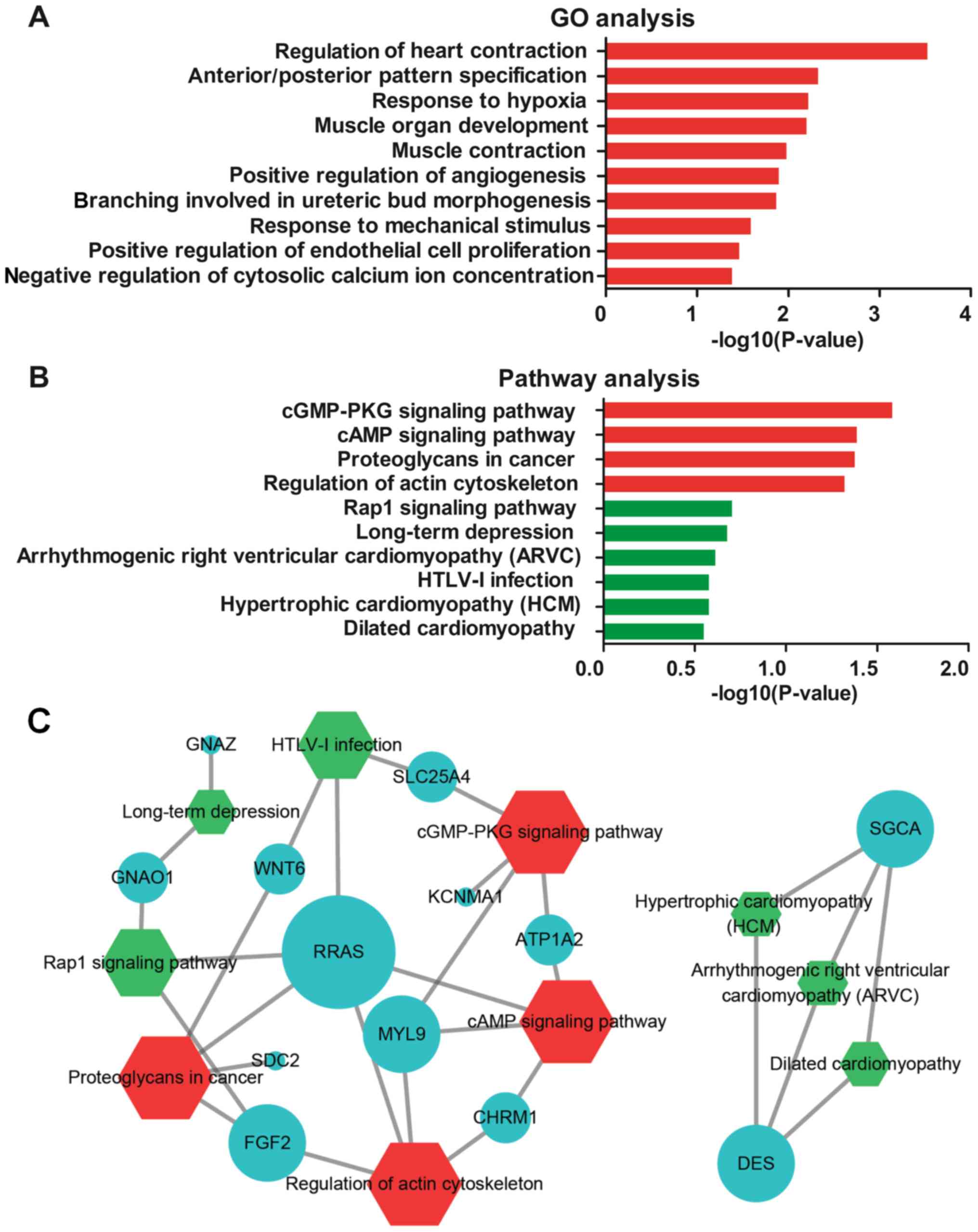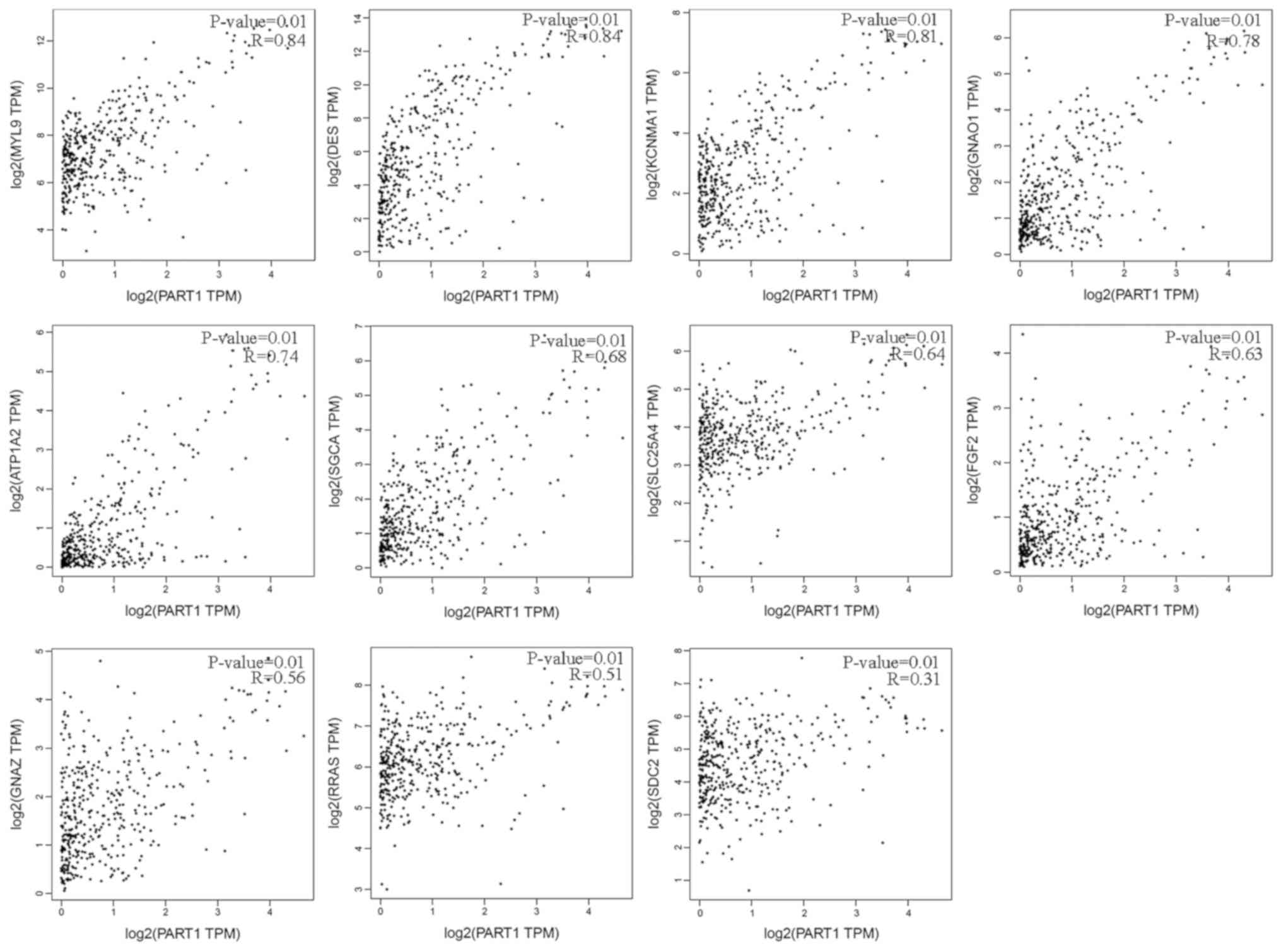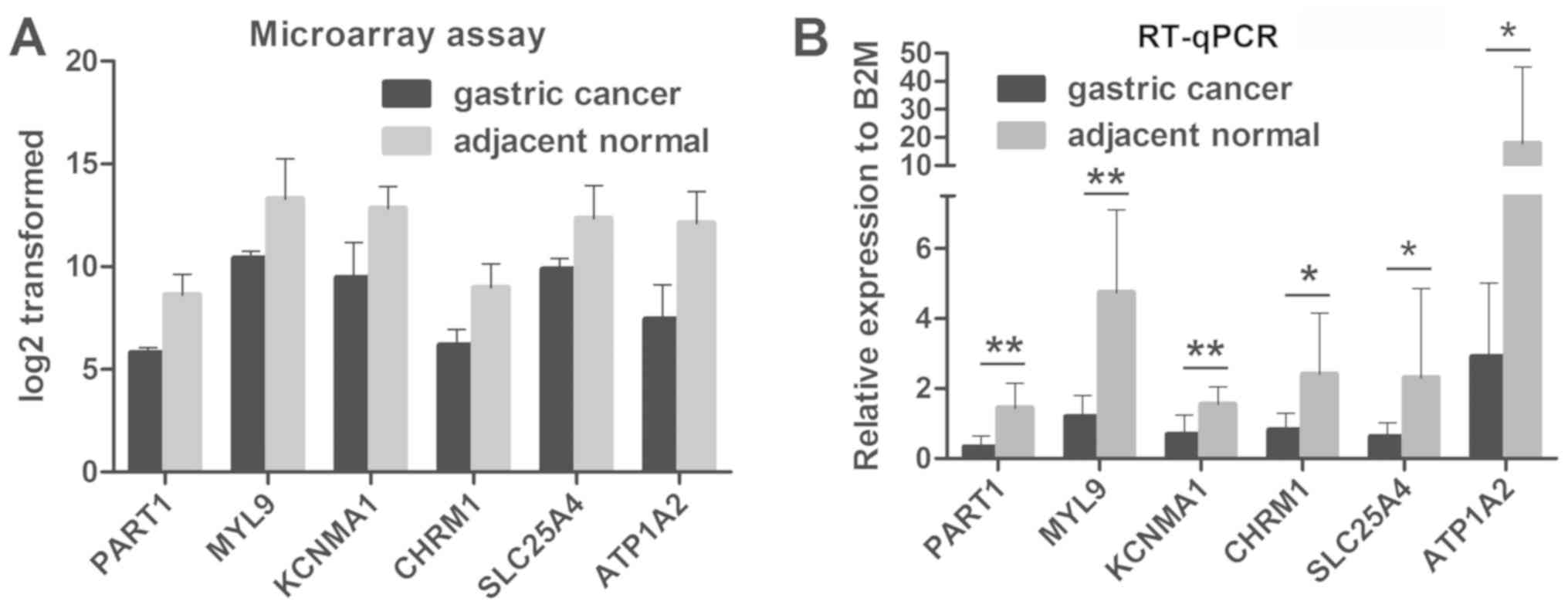|
1
|
Overman MJ: Immunotherapy in colorectal
cancer with mismatch repair deficiency. Clin Adv Hematol Oncol.
17:265–267. 2019.PubMed/NCBI
|
|
2
|
Shariq OA, Hanson KT, McKenna NP, Kelley
SR, Dozois EJ, Lightner AL, Mathis KL and Habermann EB: Does
metabolic syndrome increase the risk of postoperative complications
in patients undergoing colorectal cancer surgery? Dis Colon Rectum.
62:849–858. 2019. View Article : Google Scholar : PubMed/NCBI
|
|
3
|
Lund M, Trads M, Njor SH, Erichsen R and
Andersen B: Quality indicators for screening colonoscopy and
colonoscopist performance and the subsequent risk of interval
colorectal cancer: A systematic review. JBI Database System Rev
Implement Rep. Jun 18–2019.(Epub ahead of print). View Article : Google Scholar : PubMed/NCBI
|
|
4
|
Kye BH, Rookkachart T, Kim JH, Kim HJ, Lee
YS, Lee IK, Kang WK, Cho HM and Oh ST: Safety of laparoscopic
oncologic resection in elderly patients with colorectal cancer: A
multicenter retrospective study based on perioperative short-term
outcomes. J Laparoendosc Adv Surg Tech A. Jun 12–2019.(Epub ahead
of print). View Article : Google Scholar : PubMed/NCBI
|
|
5
|
Kugimiya N, Harada E, Suehiro Y, Suga A,
Takemoto Y and Hamano K: Determination of thymidine phosphorylase
expression level facilitates recurrence risk stratification in
stage II/III colorectal cancer following adjuvant chemotherapy with
oral fluoropyrimidines. Oncol Lett. 17:5267–5274. 2019.PubMed/NCBI
|
|
6
|
Long B, Xiao ZN, Shang LH, Pan BY and Chai
J: Impact of perioperative transfusion in patients undergoing
resection of colorectal cancer liver metastases: A population-based
study. World J Clin Cases. 7:1093–1102. 2019. View Article : Google Scholar : PubMed/NCBI
|
|
7
|
Kim MJ, Oh HK, Lee KC, Yang HH, Koo BW,
Lee J, Kim MH, Kang SI, Kim DW and Kang SB: Effects of an
Internet-based informational video on preoperative anxiety in
patients with colorectal cancer. Ann Surg Treat Res. 96:290–295.
2019. View Article : Google Scholar : PubMed/NCBI
|
|
8
|
Goto N, Fukuda A, Yamaga Y, Yoshikawa T,
Maruno T, Maekawa H, Inamoto S, Kawada K, Sakai Y, Miyoshi H, et
al: Lineage tracing and targeting of IL17RB+ tuft
cell-like human colorectal cancer stem cells. Proc Natl Acad Sci
USA. Jun 10–2019.(Epub ahead of print). View Article : Google Scholar
|
|
9
|
Li K, Li L, Wu X, Yu J, Ma H, Zhang R, Li
Y and Wang W: Loss of SDC1 expression is associated with poor
prognosis of colorectal cancer patients in Northern China. Dis
Markers. 2019:37687082019. View Article : Google Scholar : PubMed/NCBI
|
|
10
|
Samarakoon YM, Gunawardena NS, Pathirana
A, Perera MN and Hewage SA: Prediction of colorectal cancer risk
among adults in a lower middle-income country. J Gastrointest
Oncol. 10:445–452. 2019. View Article : Google Scholar : PubMed/NCBI
|
|
11
|
Laghousi D, Jafari E, Nikbakht H, Nasiri
B, Shamshirgaran M and Aminisani N: Gender differences in
health-related quality of life among patients with colorectal
cancer. J Gastrointest Oncol. 10:453–461. 2019. View Article : Google Scholar : PubMed/NCBI
|
|
12
|
Midthun L, Shaheen S, Deisch J, Senthil M,
Tsai J and Hsueh CT: Concomitant KRAS and BRAF mutations in
colorectal cancer. J Gastrointest Oncol. 10:577–581. 2019.
View Article : Google Scholar : PubMed/NCBI
|
|
13
|
Taira K, Nadatani Y, Hirano S, Maeda K and
Fujiwara Y: Large skin ulcer and delayed wound healing around a
colostomy in a patient with metastatic colorectal cancer receiving
vascular endothelial growth factor receptor-2 inhibitor therapy.
Case Rep Oncol. 12:370–375. 2019. View Article : Google Scholar : PubMed/NCBI
|
|
14
|
Amin M, Desai M, Trinkaus K, Brown A,
Wang-Gillam A, Tan B, Picus J, Sorscher S, Highkin M, Lears K and
Lockhart AC: Phase II trial of levocetirizine with capecitabine and
bevacizumab to overcome the resistance of antiangiogenic therapies
in refractory metastatic colorectal cancer. J Gastrointest Oncol.
10:412–420. 2019. View Article : Google Scholar : PubMed/NCBI
|
|
15
|
Aladhraei M, Al-Salami E, Poungvarin N and
Suwannalert P: The roles of p53 and XPO1 on colorectal cancer
progression in Yemeni patients. J Gastrointest Oncol. 10:437–444.
2019. View Article : Google Scholar : PubMed/NCBI
|
|
16
|
Patel A, Tripathi G, McTernan P,
Gopalakrishnan K, Ali O, Spector E, Williams N and Arasaradnam RP:
Fibroblast growth factor 7 signalling is disrupted in colorectal
cancer and is a potential marker of field cancerisation. J
Gastrointest Oncol. 10:429–436. 2019. View Article : Google Scholar : PubMed/NCBI
|
|
17
|
Vu JV, Matusko N, Hendren S, Regenbogen SE
and Hardiman KM: Patient-reported unmet needs in colorectal cancer
survivors after treatment for curative intent. Dis Colon Rectum.
62:815–822. 2019. View Article : Google Scholar : PubMed/NCBI
|
|
18
|
Yang C, Wei C, Wang S, Shi D, Zhang C, Lin
X, Dou R and Xiong B: Elevated CD163+/CD68+
ratio at tumor invasive front is closely associated with aggressive
phenotype and poor prognosis in colorectal cancer. Int J Biol Sci.
15:984–998. 2019. View Article : Google Scholar : PubMed/NCBI
|
|
19
|
Livak KJ and Schmittgen TD: Analysis of
relative gene expression data using real-time quantitative PCR and
the 2(-Delta Delta C(T)) method. Methods. 25:402–408. 2001.
View Article : Google Scholar : PubMed/NCBI
|
|
20
|
Ling A, Lundberg IV, Eklöf V, Wikberg ML,
Öberg Å, Edin S and Palmqvist R: The infiltration, and prognostic
importance, of Th1 lymphocytes vary in molecular subgroups of
colorectal cancer. J Pathol Clin Res. 2:21–31. 2015. View Article : Google Scholar : PubMed/NCBI
|
|
21
|
Edelman EA and Reed EK: An update on risk
assessment for familial and hereditary colorectal cancer. J Am
Assoc Nurse Pract. 31:327–329. 2019.
|
|
22
|
Li Q, Wei L, Lin S, Chen Y, Lin J and Peng
J: Synergistic effect of kaempferol and 5-fluorouracil on the
growth of colorectal cancer cells by regulating the PI3K/Akt
signaling pathway. Mol Med Rep. May 27–2019.(Epub ahead of
print).
|
|
23
|
Dahal Lamichane B, Jung SY, Yun J, Kang S,
Kim DY, Lamichane S, Kim YJ, Park JH, Jang WB, Ji ST, et al: AGR2
is a target of canonical Wnt/β-catenin signaling and is important
for stemness maintenance in colorectal cancer stem cells. Biochem
Biophys Res Commun. Jun 6–2019.(Epub ahead of print). View Article : Google Scholar : PubMed/NCBI
|
|
24
|
Schmied BJ, Riegg F, Zekri L,
Grosse-Hovest L, Bühring HJ, Jung G and Salih HR: An Fc-Optimized
CD133 antibody for induction of natural killer cell reactivity
against colorectal cancer. Cancers (Basel). 11:E7892019. View Article : Google Scholar : PubMed/NCBI
|
|
25
|
Cheng D, Deng J, Zhang B, He X, Meng Z, Li
G, Ye H, Zheng S, Wei L, Deng X, et al: LncRNA HOTAIR
epigenetically suppresses miR-122 expression in hepatocellular
carcinoma via DNA methylation. EBioMedicine. 36:159–170. 2018.
View Article : Google Scholar : PubMed/NCBI
|
|
26
|
Haddow JB, Walshe M, Aggarwal D, Thapar A,
Hardman J, Wilson J, Oshowo A, Bhan C and Mukhtar H: Improving the
diagnostic stage of the suspected colorectal cancer pathway: A
quality improvement project. Healthc (Amst). 4:225–234. 2016.
View Article : Google Scholar : PubMed/NCBI
|
|
27
|
Aziz H, Pandit V, DiGiovanni RM, Ohlson E,
Gruessner AC, Jandova J and Nfonsam VN: Increased incidence of
early onset colorectal cancer in Arizona: A comprehensive 15-year
analysis of the Arizona cancer registry. J Gastrointest Dig Syst.
5:3452015.PubMed/NCBI
|
|
28
|
Guo LW, Li N, Chen HD, Lyu ZY, Feng XS,
Wei LP, Li X, Wen Y, Lu M and Dai M: Progress in construction and
verification of colorectal cancer risk prediction models: A
systematic review. Zhonghua Yu Fang Yi Xue Za Zhi. 53:603–610.
2019.(In Chinese). PubMed/NCBI
|
|
29
|
Nfonsam VN, Vijayasekaran A, Pandit V, E
V, Aziz H, Nzuonkwelle S, Ohlson E, DiGiovanni RM and Jandova J:
Patients diagnosed with colorectal cancer in rural areas in Arizona
typically present with higher stage disease. J Gastrointest Dig
Syst. 5(pii): 3462015.PubMed/NCBI
|
|
30
|
Ciombor KK and Goldberg RM: Update on
anti-angiogenesis therapy in colorectal cancer. Curr Colorectal
Cancer Rep. 11:378–387. 2015. View Article : Google Scholar : PubMed/NCBI
|
|
31
|
Dong-Xu W, Jia L and Su-Juan Z:
MicroRNA-185 is a novel tumor suppressor by negatively modulating
the Wnt/β-catenin pathway in human colorectal cancer. Indian J
Cancer. 52 (Suppl 3):E182–E185. 2015. View Article : Google Scholar : PubMed/NCBI
|
|
32
|
Du W and Fang JY: nutrients impact the
pathogenesis and development of colorectal cancer. Gastrointest
Tumors. 2:203–207. 2016. View Article : Google Scholar : PubMed/NCBI
|
|
33
|
Wilder FG, Burnett A, Oliver J, Demyen MF
and Chokshi RJ: A review of the long-term oncologic outcomes of
robotic surgery versus laparoscopic surgery for colorectal cancer.
Indian J Surg. 78:214–219. 2016. View Article : Google Scholar : PubMed/NCBI
|
|
34
|
Raina K, Kumar S, Dhar D and Agarwal R:
Silibinin and colorectal cancer chemoprevention: A comprehensive
review on mechanisms and efficacy. J Biomed Res. 30:452–465.
2016.PubMed/NCBI
|
|
35
|
Jia H, Xiang L, Wang Z and Zhou Q: A study
on the mechanism of low-expressed cancer stem cell marker Lgr5 in
inhibition of the proliferation and invasion of colorectal
carcinoma. Cell Biochem Biophys. 73:393–397. 2015. View Article : Google Scholar : PubMed/NCBI
|
|
36
|
Urbanska AM, Zhang X and Prakash S:
Bioengineered colorectal cancer drugs: Orally delivered
anti-inflammatory agents. Cell Biochem Biophys. 72:757–769. 2015.
View Article : Google Scholar : PubMed/NCBI
|
|
37
|
Ahronian LG and Corcoran RB: Effective
MAPK Inhibition is critical for therapeutic responses in colorectal
cancer with BRAF mutations. Mol Cell Oncol. 3:e10484052016.
View Article : Google Scholar : PubMed/NCBI
|
|
38
|
Sheng QS, Hua HJ, Cheng XB, Wang WB, Chen
WB, Xu JH and Lin JJ: A modified spontaneously closed defunctioning
tube ileostomy after anterior resection of the rectum for rectal
cancer with a low colorectal anastomosis. Indian J Surg.
78:125–129. 2016. View Article : Google Scholar : PubMed/NCBI
|
|
39
|
Han YH, Lim ST, Jeong HJ and Sohn MH:
Clinical value of a one-stop-shop low-dose lung screening combined
with (18)F-FDG PET/CT for the detection of metastatic lung nodules
from colorectal cancer. Nucl Med Mol Imaging. 50:144–149. 2016.
View Article : Google Scholar : PubMed/NCBI
|
|
40
|
Triantafillidis JK, Vagianos C and
Malgarinos G: Colonoscopy in colorectal cancer screening: Current
aspects. Indian J Surg Oncol. 6:237–250. 2015. View Article : Google Scholar : PubMed/NCBI
|
|
41
|
Dawood S, Sirohi B, Shrikhande SV, Toh HC
and Eng C: Potential prognostic impact of baseline CEA level and
surgery of primary tumor among patients with synchronous stage IV
colorectal cancer: A large population based study. Indian J Surg
Oncol. 6:198–206. 2015. View Article : Google Scholar : PubMed/NCBI
|
|
42
|
Koelzer VH, Canonica K, Dawson H, Sokol L,
Karamitopoulou-Diamantis E, Lugli A and Zlobec I: Phenotyping of
tumor-associated macrophages in colorectal cancer: Impact on single
cell invasion (tumor budding) and clinicopathological outcome.
Oncoimmunology. 5:e11066772015. View Article : Google Scholar : PubMed/NCBI
|
|
43
|
Correale P, Botta C, Martino EC, Ulivieri
C, Battaglia G, Carfagno T, Rossetti MG, Fioravanti A, Guidelli GM,
Cheleschi S, et al: Phase Ib study of poly-epitope peptide
vaccination to thymidylate synthase (TSPP) and GOLFIG
chemo-immunotherapy for treatment of metastatic colorectal cancer
patients. Oncoimmunology. 5:e11012052015. View Article : Google Scholar : PubMed/NCBI
|
|
44
|
Rosa I, Fidalgo P, Filipe B, Albuquerque
C, Fonseca R, Chaves P and Pereira AD: Sporadic colorectal cancer:
Studying ways to an end. United European Gastroenterol J.
4:288–296. 2016. View Article : Google Scholar : PubMed/NCBI
|
|
45
|
Meyerhardt JA: What should we tell our
patients with colorectal cancer about diet, supplements, and
lifestyle? Clin Adv Hematol Oncol. 13:636–638. 2015.PubMed/NCBI
|
|
46
|
Sun M, Geng D, Li S, Chen Z and Zhao W:
LncRNA PART1 modulates toll-like receptor pathways to influence
cell proliferation and apoptosis in prostate cancer cells. Biol
Chem. 399:387–395. 2018. View Article : Google Scholar : PubMed/NCBI
|
|
47
|
Angelova M, Charoentong P, Hackl H and
Trajanoski Z: The colorectal cancer immune paradox revisited.
Oncoimmunology. 5:e10780582015. View Article : Google Scholar : PubMed/NCBI
|
|
48
|
Jurjus A, Eid A, Al Kattar S, Zeenny MN,
Gerges-Geagea A, Haydar H, Hilal A, Oueidat D, Matar M, Tawilah J,
et al: Inflammatory bowel disease, colorectal cancer and type 2
diabetes mellitus: The links. BBA Clin. 5:16–24. 2015. View Article : Google Scholar : PubMed/NCBI
|
|
49
|
Sokolova EA, Boyarskikh UA, Shirshova AN,
Kel AE and Filipenko ML: The biomarkers for timely diagnostics of
colorectal cancer. Klin Lab Diagn. 60:15–23. 2015.(In Russian).
PubMed/NCBI
|
|
50
|
Echterdiek F, Janikovits J, Staffa L,
Müller M, Lahrmann B, Frühschütz M, Hartog B, Nelius N, Benner A,
Tariverdian M, et al: Low density of FOXP3-positive T cells in
normal colonic mucosa is related to the presence of
beta2-microglobulin mutations in Lynch syndrome-associated
colorectal cancer. Oncoimmunology. 5:e10756922015. View Article : Google Scholar : PubMed/NCBI
|
|
51
|
Russo G, Patrignani A, Poveda L, Hoehn F,
Scholtka B, Schlapbach R and Garvin AM: Highly sensitive,
non-invasive detection of colorectal cancer mutations using single
molecule, third generation sequencing. Appl Transl Genom. 7:32–39.
2015. View Article : Google Scholar : PubMed/NCBI
|
|
52
|
Stoll G, Zitvogel L and Kroemer G:
Differences in the composition of the immune infiltrate in breast
cancer, colorectal carcinoma, melanoma and non-small cell lung
cancer: A microarray-based meta-analysis. Oncoimmunology.
5:e10677462015. View Article : Google Scholar : PubMed/NCBI
|
|
53
|
Lu LL, Chen XH, Zhang G, Liu ZC, Wu N,
Wang H, Qi YF, Wang HS, Cai SH and Du J: CCL21 facilitates
chemoresistance and cancer stem cell-like properties of colorectal
cancer cells through AKT/GSK-3β/Snail signals. Oxid Med Cell
Longev. 2016:58741272016. View Article : Google Scholar : PubMed/NCBI
|



